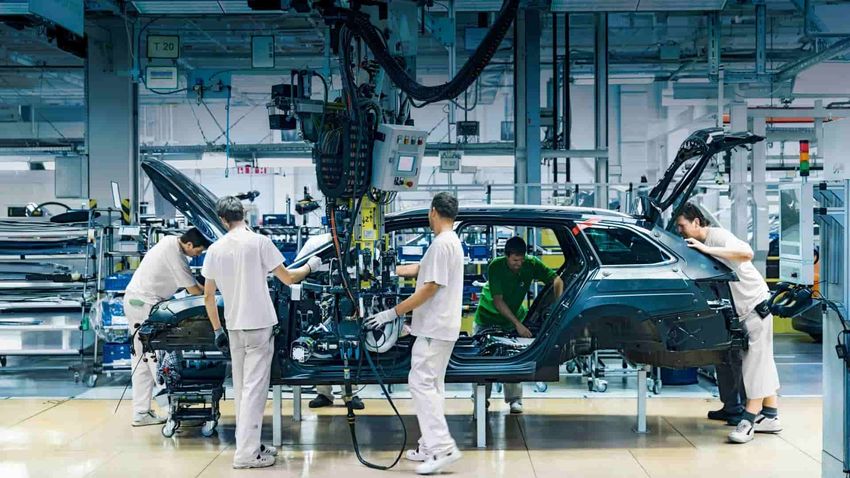The production of a modern automobile involves a complex network of highly skilled professionals. It’s not just machines that build cars — it’s a team of dedicated engineers, technicians, and specialists who make it all possible. Each person has a specific role to ensure the final product is safe, efficient, and ready for the road.
In this detailed guide, we explore the key engineers and technicians who work behind the scenes in an automobile factory, their responsibilities, and how they contribute to the vehicle you drive every day.
⚙️ 1. Design Engineers 👩💻📐
Design engineers are the visionaries behind the look and functionality of the vehicle.
Key Responsibilities:
-
Create the aesthetic design of cars, from body shape to interior layout.
-
Ensure aerodynamics, ergonomics, and safety are optimized.
-
Work closely with 3D modeling software and CAD tools.
🧠 These engineers translate concepts into prototypes and eventually, production-ready models.
🛠️ 2. Mechanical Engineers 🧰🔩
Mechanical engineers are responsible for the moving parts and mechanical systems of the vehicle.
Key Responsibilities:
-
Design and test components like engines, brakes, transmission, and suspension systems.
-
Analyze durability, stress, and performance under different conditions.
-
Collaborate with other departments to ensure mechanical reliability.
🚗 Without mechanical engineers, the car wouldn’t function on the road!
🔋 3. Electrical and Electronics Engineers ⚡🔌
Modern cars are as much electronic as they are mechanical.
Key Responsibilities:
-
Design the electrical systems, including lighting, infotainment, and battery management.
-
Work on embedded systems, sensors, and software integration.
-
Lead development in electric vehicles (EVs) and hybrid powertrains.
💡 These engineers help bring smart features and EV technology to life.
🖥️ 4. Software Engineers 👨💻🧠
With the rise of smart cars and autonomous technology, software engineers are vital.
Key Responsibilities:
-
Develop software for infotainment systems, navigation, driver assistance, and more.
-
Work on autonomous driving algorithms and real-time data processing.
-
Ensure cybersecurity for connected car features.
🤖 They are at the heart of innovations like self-driving cars and voice assistants.
🧪 5. Quality Control Engineers ✅🔍
Quality Control (QC) engineers ensure that every car meets strict standards before it leaves the factory.
Key Responsibilities:
-
Inspect components and assembled vehicles for defects or deviations.
-
Use testing tools and data analysis to improve quality.
-
Lead root-cause analysis and implement corrective actions.
🎯 These engineers protect brand reputation and customer safety.
🧯 6. Safety Engineers 🦺🚨
Safety engineers ensure every vehicle is safe for the driver, passengers, and pedestrians.
Key Responsibilities:
-
Design and test airbags, crumple zones, and seatbelts.
-
Conduct crash simulations and impact analysis.
-
Ensure compliance with government regulations and safety ratings.
🛡️ Their work saves lives by reducing injury during accidents.
🧭 7. Industrial Engineers 🏗️📊
Industrial engineers optimize the manufacturing process for maximum efficiency.
Key Responsibilities:
-
Plan the layout of the factory floor and assembly line.
-
Improve production workflows, time management, and resource allocation.
-
Reduce waste, boost productivity, and maintain cost-effectiveness.
🔧 They ensure the factory runs like a well-oiled machine.
🔧 8. Maintenance Technicians 🧰🛠️
Without maintenance technicians, the factory itself would grind to a halt.
Key Responsibilities:
-
Maintain and repair machines, robots, and tools used in production.
-
Conduct routine inspections and preventive maintenance.
-
Quickly fix breakdowns to avoid production delays.
⚙️ They keep the machinery humming 24/7.
👨🔧 9. Assembly Line Technicians 🚙📦
Assembly technicians are the backbone of the factory floor, putting together thousands of parts with precision.
Key Responsibilities:
-
Assemble parts like chassis, doors, engines, and interiors.
-
Follow standardized procedures to maintain uniform quality.
-
Use power tools, robotic arms, and measuring instruments.
🤝 They bring all the components together to build the final car.
🧫 10. Materials Engineers & Metallurgists 🧪🔩
These specialists decide what materials the car is made of.
Key Responsibilities:
-
Choose lightweight yet strong materials for durability and efficiency.
-
Analyze metals, plastics, and composites for heat resistance, strength, and cost.
-
Develop new materials for better performance and sustainability.
🌍 Their choices impact everything from performance to fuel efficiency and even emissions.
📊 11. Production Planning Engineers 📝📅
They’re the strategists who ensure everything in the factory works in sync.
Key Responsibilities:
-
Create detailed production schedules and timelines.
-
Coordinate supply chains to ensure just-in-time inventory.
-
Track performance metrics and adjust plans as needed.
🧠 Think of them as the brain behind the factory’s timing and logistics.
👥 12. Research and Development (R&D) Engineers 🧪🧬
R&D teams are always working on the next big thing in car design and performance.
Key Responsibilities:
-
Innovate new vehicle models, features, and technologies.
-
Perform long-term experiments, simulations, and field testing.
-
Collaborate with design and production teams for real-world implementation.
🔍 Their work defines the future of mobility.
🧰 Conclusion: A Team Effort Behind Every Car 🏁🚗
An automobile is a masterpiece of engineering — and it wouldn’t exist without the skilled professionals behind it. From engineers who design, test, and optimize, to technicians who assemble and maintain, every role is vital to the final product.
🚘 Summary of Key Roles:
-
Engineers: Design, build, and test.
-
Technicians: Operate, maintain, and assemble.
-
Planners and Analysts: Strategize and optimize.


